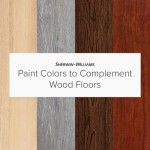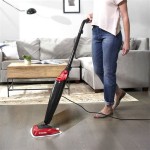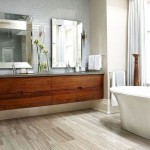What Are Engineered Wood Floors?
Engineered wood flooring has become an increasingly popular alternative to solid hardwood floors in both residential and commercial spaces. Its construction, advantages, and diverse applications have positioned it as a versatile and aesthetically pleasing flooring option. Understanding the composition, characteristics, and installation processes of engineered wood floors is crucial for any homeowner or contractor considering this material.
Unlike solid hardwood, which is made from a single piece of wood, engineered wood flooring is manufactured using multiple layers. These layers are bonded together under heat and pressure to create a durable and stable plank. The top layer, known as the wear layer, is a veneer of real hardwood, providing the visual appeal and feel of solid wood. The core layers beneath the veneer typically consist of plywood, high-density fiberboard (HDF), or softwood. This multi-layered construction significantly enhances the floor's resistance to moisture, warping, and expansion, issues commonly associated with solid hardwood.
The thickness of the wear layer is a critical factor that determines the floor’s lifespan and its ability to be refinished. Thicker wear layers allow for multiple refinishing processes, extending the floor's overall longevity. Conversely, thinner wear layers may only allow for light buffing or recoating, limiting the floor's reparability over time. Therefore, considering the wear layer thickness is paramount when selecting engineered wood flooring.
The variety of wood species available for the wear layer is extensive, ranging from traditional options like oak, maple, and hickory to more exotic choices such as Brazilian cherry and bamboo. Each species offers unique grain patterns, color variations, and hardness levels, allowing consumers to select a floor that complements their specific design aesthetic and lifestyle needs. Hardness is often measured using the Janka hardness scale, which indicates the wood’s resistance to denting and wear. Selecting a species with an appropriate hardness rating is crucial for high-traffic areas or homes with pets.
Installation methods for engineered wood floors are diverse, offering flexibility for different subfloor types and project requirements. Common installation methods include floating, gluing, and nailing. Floating installations involve interlocking the planks together without attaching them directly to the subfloor, allowing for expansion and contraction. Glue-down installations provide a stable and permanent bond between the flooring and the subfloor. Nail-down installations are often used over wooden subfloors, offering a secure and traditional attachment method.
The cost of engineered wood flooring varies depending on factors such as the wood species, wear layer thickness, core material, and installation method. While typically less expensive than solid hardwood, engineered wood flooring can still represent a significant investment. Obtaining multiple quotes from reputable suppliers and considering the long-term value of the flooring is essential for making an informed purchasing decision.
Increased Dimensional Stability
One of the key advantages of engineered wood flooring is its superior dimensional stability compared to solid hardwood. The multi-layered construction of engineered wood significantly reduces the floor's susceptibility to expansion and contraction caused by fluctuations in temperature and humidity. This stability makes engineered wood flooring a suitable option for basements, kitchens, and other areas prone to moisture.
Solid hardwood, being a single piece of wood, is more prone to warping, cupping, and cracking as it absorbs and releases moisture. This dimensional instability can lead to unsightly gaps between planks and require costly repairs. Engineered wood, on the other hand, is designed to resist these changes, maintaining its structural integrity and appearance over time. The cross-layered construction of the core prevents the wood from moving as drastically as solid wood would.
This dimensional stability is particularly important in regions with significant seasonal changes in humidity. Homes located in these areas often experience extreme fluctuations in moisture levels, which can wreak havoc on solid hardwood floors. Engineered wood flooring provides a more reliable and durable solution in such environments, minimizing the risk of damage and preserving the floor’s aesthetic appeal.
Furthermore, engineered wood flooring can be installed over a wider range of subfloor types, including concrete slabs. Solid hardwood typically requires a wooden subfloor for proper installation, adding to the overall cost and complexity of the project. The dimensional stability of engineered wood allows it to be directly adhered to concrete, simplifying the installation process and reducing the need for additional subfloor preparation.
The ability to withstand moisture and temperature changes also contributes to the reduced maintenance requirements of engineered wood flooring. Unlike solid hardwood, which may require periodic sanding and refinishing to address surface imperfections, engineered wood flooring can often be maintained with regular cleaning and occasional recoating. This ease of maintenance makes it a practical choice for busy households and commercial spaces.
Greater Design Versatility
Engineered wood flooring offers a wider range of design options compared to solid hardwood. The availability of various wood species, plank widths, and surface finishes allows consumers to customize their floors to match their specific aesthetic preferences. This versatility makes engineered wood flooring a popular choice for both traditional and contemporary design schemes.
The wear layer of engineered wood flooring can be manufactured using virtually any hardwood species, providing a diverse selection of colors, grain patterns, and textures. From the warm tones of oak to the rich hues of mahogany, consumers can choose a species that complements their existing décor and creates the desired ambiance in their space. The ability to select from a broad range of wood species is a significant advantage over solid hardwood, which may be limited by regional availability and cost considerations.
Plank widths also contribute to the design versatility of engineered wood flooring. Wider planks create a more expansive and luxurious feel, while narrower planks offer a more traditional and refined look. The ability to choose from different plank widths allows consumers to tailor the flooring to the size and proportions of their room, enhancing the overall visual impact of the space.
Surface finishes further enhance the design possibilities of engineered wood flooring. Options such as smooth, hand-scraped, and wire-brushed finishes provide different textures and visual effects, adding depth and character to the flooring. Smooth finishes offer a clean and modern look, while hand-scraped and wire-brushed finishes create a more rustic and distressed appearance. The choice of surface finish can significantly alter the overall aesthetic of the floor, allowing consumers to achieve their desired style.
Moreover, engineered wood flooring can be installed in various patterns, such as herringbone, chevron, and parquet. These intricate patterns add visual interest and sophistication to the floor, creating a focal point in the room. The ability to install engineered wood in these patterns is a testament to its versatility and adaptability to different design styles.
Simplified Installation Processes
The installation of engineered wood flooring is generally simpler and faster than installing solid hardwood. The various installation methods available, including floating, gluing, and nailing, provide flexibility for different subfloor types and project requirements. This ease of installation can save time and money on labor costs, making engineered wood flooring a cost-effective option.
Floating installations are particularly easy and quick to execute. This method involves interlocking the planks together without attaching them directly to the subfloor. This allows for expansion and contraction, which makes this method suitable for large areas. A floating floor requires minimal preparation and can be installed by experienced DIYers, reducing the need for professional installers.
Glue-down installations offer a more stable and permanent bond between the flooring and the subfloor. This method is often used in commercial settings or in areas where moisture is a concern. While glue-down installations require more preparation and skill than floating installations, they still offer a relatively straightforward process compared to installing solid hardwood.
Nail-down installations are a traditional method used primarily over wooden subfloors. This method provides a secure and reliable attachment, ensuring that the floor remains stable over time. While nail-down installations require specialized tools and expertise, they still offer a relatively simple process compared to the intricate nailing patterns often required for solid hardwood floors.
The simplified installation processes associated with engineered wood flooring can significantly reduce the overall project timeline and labor costs. This is particularly beneficial for large-scale projects or for homeowners who are looking to save money on professional installation services. The ease of installation, combined with the other advantages of engineered wood flooring, makes it a compelling choice for many flooring projects.
In addition to simplified installation, engineered wood flooring is often easier to cut and shape than solid hardwood. This reduces waste and allows for more precise installations, particularly in areas with complex layouts or intricate details. The ease of cutting and shaping also contributes to the overall efficiency of the installation process.

What Is Engineered Wood Flooring Made Of And Beyond Blog

The Ultimate Guide To Engineered Hardwood Flooring Precision

Types Of Hardwood Flooring Carpet One Floor Home

6mm Wear Layer Engineered Wood Flooring Thicker Is Better

Engineered Wood Flooring Homeowner Pros Cons

Best Engineered Hardwood Floor For Scratch Resistance Lifecore Flooring S

Hardwood Flooring In Woodstock Ga From Cherokee Floor Covering

How To Install Engineered Hardwood Floors 4 Easy Installation Options

All About Our Engineered Hardwood Floors By Hearthwood Kate Knowles Home

4 Key Benefits Of Installing Engineered Wood Flooring Mikasa Real Floors Blog







